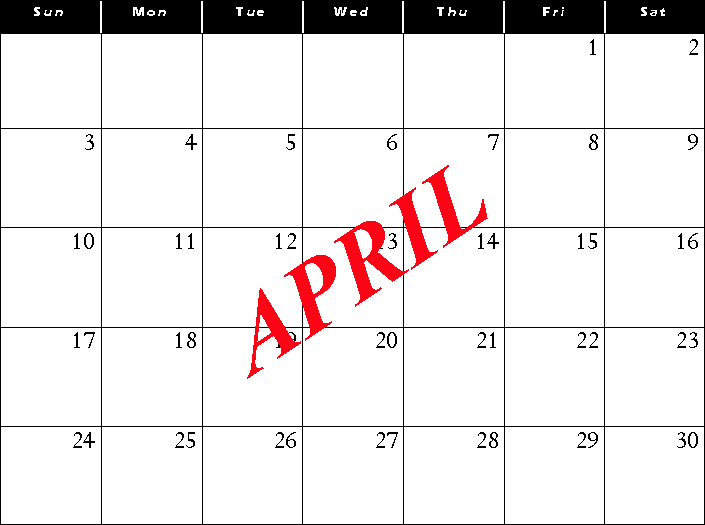 Most American businesses keep track of their charges and receivables using a “first in, first out” method. The central principle of this method, referred to as “FIFO,” is to apply customers’ payments toward their earliest balances first, and then toward their later balances. New Jersey landlords had also accepted the FIFO method of accounting until relatively recently, when the State Supreme Court ordered that eviction complaints follow a specific format, in which tenants’ unpaid charges are specifically set forth in detail.
Most American businesses keep track of their charges and receivables using a “first in, first out” method. The central principle of this method, referred to as “FIFO,” is to apply customers’ payments toward their earliest balances first, and then toward their later balances. New Jersey landlords had also accepted the FIFO method of accounting until relatively recently, when the State Supreme Court ordered that eviction complaints follow a specific format, in which tenants’ unpaid charges are specifically set forth in detail.
Using the FIFO method, for example, if a tenant failed to pay rent January and February, the next payments that the tenant did remit would be applied to January and February. That application would certainly create a gap in later months in which the payments were made. In the event that the eviction complaint followed the same methodology, it might appear that the tenant owed rents from March and April (or whatever the most recent months were), when the two missed payments were really from January and February. This method is unfortunately confusing for tenants who may show up to Court with receipts to prove that they paid certain rents, only to find that the receipts that they produced do not refer to the missing payments in question.
Prior to the institution of the revised eviction complaint format, we had found that the best method of proving the balance owed in a trial involves going back to the ledger to determine the last date when the balance owed was $0.00. Then the landlord should add up all the rents that became charged since that date (i.e.; the monthly rent multiplied by number of months). Then the landlord should add up all the receipts that were paid during that same time period, and subtract that number from the amount of rents charged to determine how much was still owed.
 New Jersey Real Estate Attorney Blog
New Jersey Real Estate Attorney Blog



 For taxpayers in Mercer, Middlesex and Monmouth Counties, who have matters pending before the
For taxpayers in Mercer, Middlesex and Monmouth Counties, who have matters pending before the  Our firm’s County Tax Appeals for the 2015 Tax Year have concluded. We are pleased to report that this year, we have reduced the assessments for our tax appeal clients by more than $5.1 Million. In more than 70% of our concluded matters, we were able to reduce the assessments for our clients. In Monmouth County, our appeals in Sea Girt had the largest margin of savings, averaging more than $150,000 per property. In Asbury Park, where a revaluation was recently conducted, assessments did not vary substantially from true market values. In Middlesex County, our concluded matters yielded an average assessment reduction of 24% of assessed value.
Our firm’s County Tax Appeals for the 2015 Tax Year have concluded. We are pleased to report that this year, we have reduced the assessments for our tax appeal clients by more than $5.1 Million. In more than 70% of our concluded matters, we were able to reduce the assessments for our clients. In Monmouth County, our appeals in Sea Girt had the largest margin of savings, averaging more than $150,000 per property. In Asbury Park, where a revaluation was recently conducted, assessments did not vary substantially from true market values. In Middlesex County, our concluded matters yielded an average assessment reduction of 24% of assessed value. For the last 12 years, our firm has been writing articles about the eviction process. We have discussed pre-suit notices, habitability hearings, security deposit defenses, and a variety of other topics, focused on the eviction process. However, we have never provided any articles regarding Warrants of Removal. The Warrant of Removal is generally the last stage in the eviction process. While post-judgment applications sometimes add an extra step to the process, it is important for landlords to have a full and complete understanding of the Warrant of Removal process, in order to minimize the risk of unnecessarily delaying the lockout of a tenant of even causing the involuntary dismissal of an eviction.
For the last 12 years, our firm has been writing articles about the eviction process. We have discussed pre-suit notices, habitability hearings, security deposit defenses, and a variety of other topics, focused on the eviction process. However, we have never provided any articles regarding Warrants of Removal. The Warrant of Removal is generally the last stage in the eviction process. While post-judgment applications sometimes add an extra step to the process, it is important for landlords to have a full and complete understanding of the Warrant of Removal process, in order to minimize the risk of unnecessarily delaying the lockout of a tenant of even causing the involuntary dismissal of an eviction. Since 2004,
Since 2004,  Our office previously reported on the changes in how Monmouth County’s tax appeals are scheduled. In order to ensure that all County Tax Appeals are heard and resolved prior to the finalization of municipal budgets, Monmouth County had implemented a new calendar that requires tax appeals to be filed by January 15. In this week’s article, we will highlight an additional change in Monmouth County’s approach to tax assessments.
Our office previously reported on the changes in how Monmouth County’s tax appeals are scheduled. In order to ensure that all County Tax Appeals are heard and resolved prior to the finalization of municipal budgets, Monmouth County had implemented a new calendar that requires tax appeals to be filed by January 15. In this week’s article, we will highlight an additional change in Monmouth County’s approach to tax assessments. As we enter the 2015 tax appeal season, we have fielded hundreds of phone calls from property owners who are interested in filing appeals. Since the determination of whether a property has been over-assessed is not always apparent without an appraisal, we have taken the time to discuss the questions presented by each caller before determining whether we would accept the matter, or reject the matter, or whether we would immediately assign the matter to one of our appraisers for a more definitive opinion as to whether the tax appeal is worthwhile for both our office and the taxpayer. During this process, the taxpayers have asked us many recurring questions. The following is a list of three frequently asked questions, along with our answers:
As we enter the 2015 tax appeal season, we have fielded hundreds of phone calls from property owners who are interested in filing appeals. Since the determination of whether a property has been over-assessed is not always apparent without an appraisal, we have taken the time to discuss the questions presented by each caller before determining whether we would accept the matter, or reject the matter, or whether we would immediately assign the matter to one of our appraisers for a more definitive opinion as to whether the tax appeal is worthwhile for both our office and the taxpayer. During this process, the taxpayers have asked us many recurring questions. The following is a list of three frequently asked questions, along with our answers: Between the 21 vicinages of the New Jersey Superior Court, thousands of employees are on staff, performing a variety of functions. Despite streamlining and reductions in workforce, the operation of the Courts remains a very expensive process, and the filing fees, which have not been increased in more than 10 years, are not sufficient to cover the expense of running the Courts. Under the circumstances, an increase in filing fees seems rather necessary to ensure that the Courts will remain properly funded. Accordingly, on August 11, 2014, the State of New Jersey Supreme Court received authorization from the legislature to enact a comprehensive set of fee increases, affecting all divisions of the Superior Courts. The proposed increases, which are projected to be enacted into law on November 17 are currently in a review process and the
Between the 21 vicinages of the New Jersey Superior Court, thousands of employees are on staff, performing a variety of functions. Despite streamlining and reductions in workforce, the operation of the Courts remains a very expensive process, and the filing fees, which have not been increased in more than 10 years, are not sufficient to cover the expense of running the Courts. Under the circumstances, an increase in filing fees seems rather necessary to ensure that the Courts will remain properly funded. Accordingly, on August 11, 2014, the State of New Jersey Supreme Court received authorization from the legislature to enact a comprehensive set of fee increases, affecting all divisions of the Superior Courts. The proposed increases, which are projected to be enacted into law on November 17 are currently in a review process and the